Real Racing 3 - The History of an App Store Icon
The soon to be released Real Racing 3 is on a lot of iOS gamers' minds these days, especially many of us here at 148Apps. Because of this we thought it would be a good idea to recap the series. In fact, we might have gone a bit beyond that and created a trilogy. First we'll be taking a look at the series' history and the history of Firemint, the Melbourne based studio that created the series. After that we'll be taking a look at the design factors and what when into creating the first two Real Racing titles as well as a little of the third. And in the third part of this series, we'll take a look at the new Time Shifted Multiplayer found in Real Racing 3.
Humble Beginnings
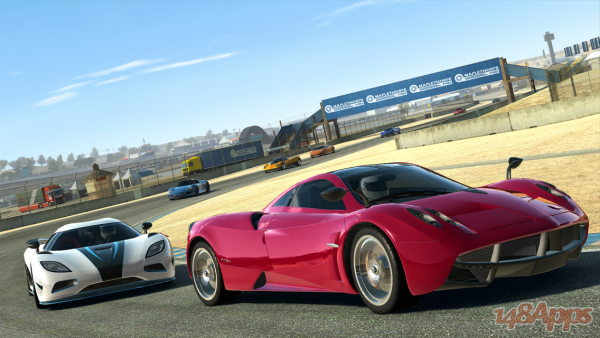
One of the best-known examples of how far developers can push Apple’s new iPhone 5 hardware is looming just over the horizon. However, it wasn’t always so. Sure the Real Racing series has steadily become pretty much synonymous with near console-quality visuals on mobile platforms, even going so far as to have a permanent spot on the App Store’s Big-Name Games and Racing Games lists, but there was once a time when no one knew the name Firemint. This was around four years ago, when most mobile games were still easily distinguished from virtually every other platform. You know, when Solitaire and box-pushing puzzles came preloaded on everything and acquiring new games wasn’t anywhere near as convenient as it is now. Oddly enough, the developer’s first major innovation wasn’t even based around graphics.
According to Kynan Woodman, Real Racing 3’s Development Director, the original Real Racing was actually more of an experiment than a real game. Specifically they were trying to figure out how to rig up accelerometer steering for a Nokia handset in a way that wasn’t awkward or unnatural. Keep in mind this was back in 2008, and up to that point attempts at such a control scheme would tilt the view along with everything else which wasn’t exactly conducive to a driving game. “To solve this problem we tilted the horizon dynamically to counter your steering of the device," he said, "so that regardless of where you moved the horizon in the game would match the real world. It seems obvious now, but no one had done it at the time.” Firemint didn’t just find a work-around for a common problem, the team developed a solution that set a new design standard for accelerometer controls.
Building A Unique Race
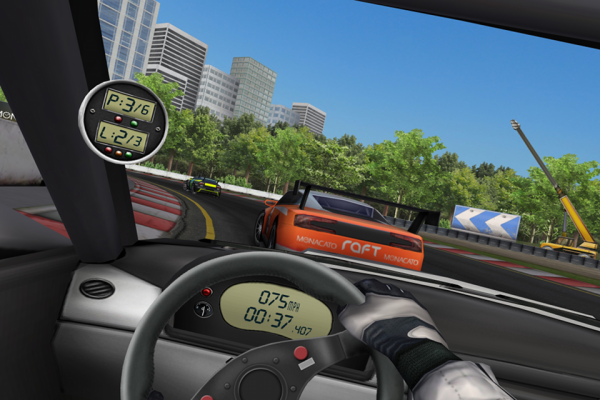
Once it had the horizon tilting figured out, Firemint began to construct the game that would eventually become Real Racing around it. “There was a lot more to the Real Racing franchise than great controls," said Woodman, "but it started with that as a key innovation.” As it turns out, innovation ended up being Firemint’s calling card of sorts.
The developer’s second major task was to construct an interior view that the series has come to be known for, “... so players could actually see the steering wheel move as they steered," Woodman said. It’s a feature that isn’t uncommon in console racing games these days (Codemasters’ Race Driver: Grid is a prime example), but it’s not prevalent in many - if any - iOS racers. The added level of detail, and by extension immersion, goes a long way to enhancing the “simulation” experience.
The decision to create a racing game built around closed tracks was made fairly early on in the cycle, however, but the rest of the design evolved as the game was developed. No one at Firement (now Firemonkeys) expected their project to become such a juggernaut on the App Store or to be the target of much speculation when early gameplay footage (above) was first revealed on PocketGamer in August of 2008. “We particularly enjoyed all the comments from consumers about how it was ‘clearly fake,’” said Woodman. Encouraged by these reactions, Firemint continued its work on through 2009, listening to fan and potential consumer feedback all the while. “We had a good idea of what people would like from the game," he said, "because we could read comments and talk to press and consumers about it. Although we couldn't do everything that players would like, we did use their feedback to help us focus the game design.”
Not Just A Racing Game Studio
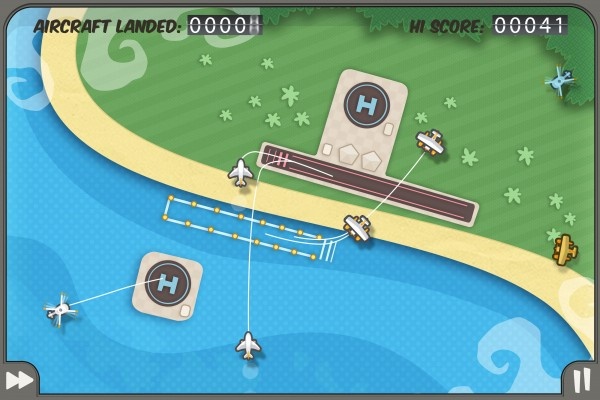
Amidst all the hullabaloo surrounding console-quality visuals and innovations up the wazoo it can be easy to forget that Firemint doesn’t only make racing games. In fact, before Real Racing came out, it was already flying high (*rimshot*) thanks to the success of Flight Control. This casual mobile rendition of a day in the life on an air traffic controller began as a simple experiment concocted by Firemint CEO Robert Murray. It was meant to be a simple design exercise created over the winter break when the studio was shut down for the holidays, but garnered so much attention around the studio that fellow Firemint designers, Alexandra Peters and Jesse West, hopped on board to help turn it into a full-blown game--a good call considering that it’s sold over half-a-million copies in its first month and well over three million to date.
Award Winner
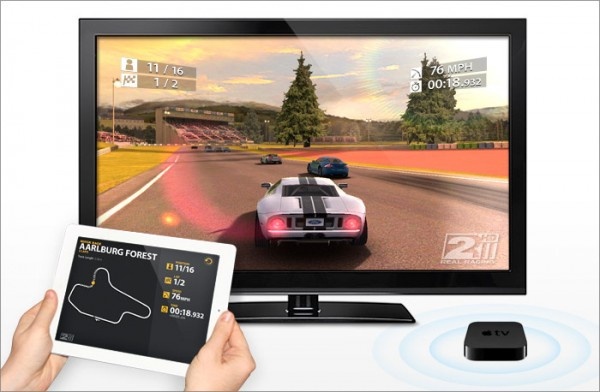
The original Real Racing went on to receive plenty of accolades, including 2010’s Apple Design and IMGA’s Excellence in Connectivity Awards, as well as a Best App Ever Award for Best Racing Game, Best Graphics, and Best Simulation Game in 2009. It’s also sold a whole bunch--and that’s just the first game. Not surprisingly, after Real Racing was launched in June of 2009, work on Real Racing 2 began roughly 6 months later.
The sequel to Firemint’s critical darling turned its fair share of heads as well when it was released in December of 2010. In addition to carrying over all the new concepts and special features that made the original Real Racing so noteworthy, Real Racing 2 added plenty of new items to its pedigree. The career mode was greatly expanded upon by allowing players to earn cash to purchase new cars and even upgrade their current ones. More camera options were added along with a special TV broadcast-style instant replay system. Vehicles were given damage models so that particularly rough races would leave telltale signs all over the racer’s cars. Online save options were added to allow players a chance to carry over their racing career when they installed the game to a new device. It was one of the first games to incorporate Apple’s Airplay technology which allowed players to view their games on their TV, using their iOS device as a stand-in for a controller. Actually, it allowed up to four players to view their games on the bigger screen all at once by way of the special Party Mode.
Last but not least, and in keeping with the whole “innovation” thing, Firemint also managed to include 16 player races (against AI in single player or 15 other people online), which was a first for iOS games at the time and no small feat in and of itself. All of these various features reportedly pushed Real Racing 2’s development costs to over $2 million. So it wasn’t just a first for iOS multiplayer, it was also a first for iOS development costs. Real Racing 2 has received a fair share of success with a combined (critic) Metacritic score of 94 to date along with taking the Best App Ever Awards for Racing and Graphics in 2010. With so many hits on Firemint's hands, it’s no wonder large publishers like EA took notice.
Big Changes
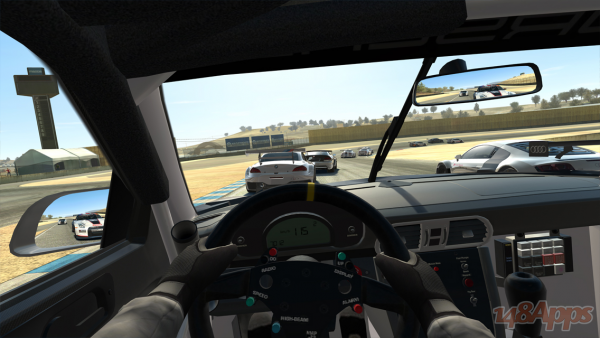
The following year, Firemint was absorbed into the collective that is Electronic Arts. Some were understandably concerned about the acquisition, as it’s not uncommon for smaller studios to lose most of what makes them special (or get dismantled entirely) once they become a part of a much larger whole. However, Firemint CEO Rob Murray, as well as EA Interactive’s Executive VP, Barry Cottle, were quick to put those fears to rest by recalling the developer’s history. Many of Firemint’s pre-Flight Control and pre-iOS releases (Need for Speed Most Wanted, Madden, etc) were created while under contract for EA Mobile. One could even argue that EA helped to shape the folks at Firemint into the dream team they are today. Getting bought by one of the largest video game publishers in the business while being able to maintain their creative freedom made for an exciting opportunity for the already quite successful developer. But it didn’t end there. In July of 2012, Firemint joined forces with IronMonkey Studios (Dead Space, Need for Speed Undercover) to create Firemonkeys. I hope they braced for all the inevitable Infernape jokes beforehand. Since then, EA’s involvement has most likely influenced Firemint’s/Firemonkey’s pricing structures, but overall it seems like they’ve left the developer to do their own thing, which is to make fantastic games.
A more recent and potentially troubling development was the announcement that Rob Murray--former CEO of Firemint, mastermind behind Flight Control, and Executive Producer at Firemonkeys--would be leaving to spend time as a full-time dad. It’s a perfectly good reason to step down and Tony Lay, EA’s Melbourne Studio GM, has more than enough experience to see Real Racing 3 to its release as the new Executive Producer, but it’s difficult not to have a little concern over what this means for Firemonkeys. Development heads come and go from time to time, as is the nature of the industry, but sometimes major shakeups can be difficult to shake off. There have also been rumblings of another kind of shakeup for Real Racing 3. The App Store is still a tough market to predict when it comes to pricing structure, and it’s rumored that Firemonkeys might do away with the premium price tag for their new racer. In fact, if the rumors are to be believed Real Racing 3 just might be free-to-play. It’s not definite by any stretch of the imagination at this point, but it is possible.
It’s impressive to think that Firemint accomplished all of this--several multi-award winning games, millions upon millions in cumulative sales, and a significant acquisition by a major publisher--in about three years' time. Where they go from here is anybody’s guess, but with Real Racing 3 looming on the horizon, the future definitely looks exciting, and pretty shiny.
Tomorrow, we'll delve into the design decisions and what it took to make the premier iOS racing game series, so stay tuned.


